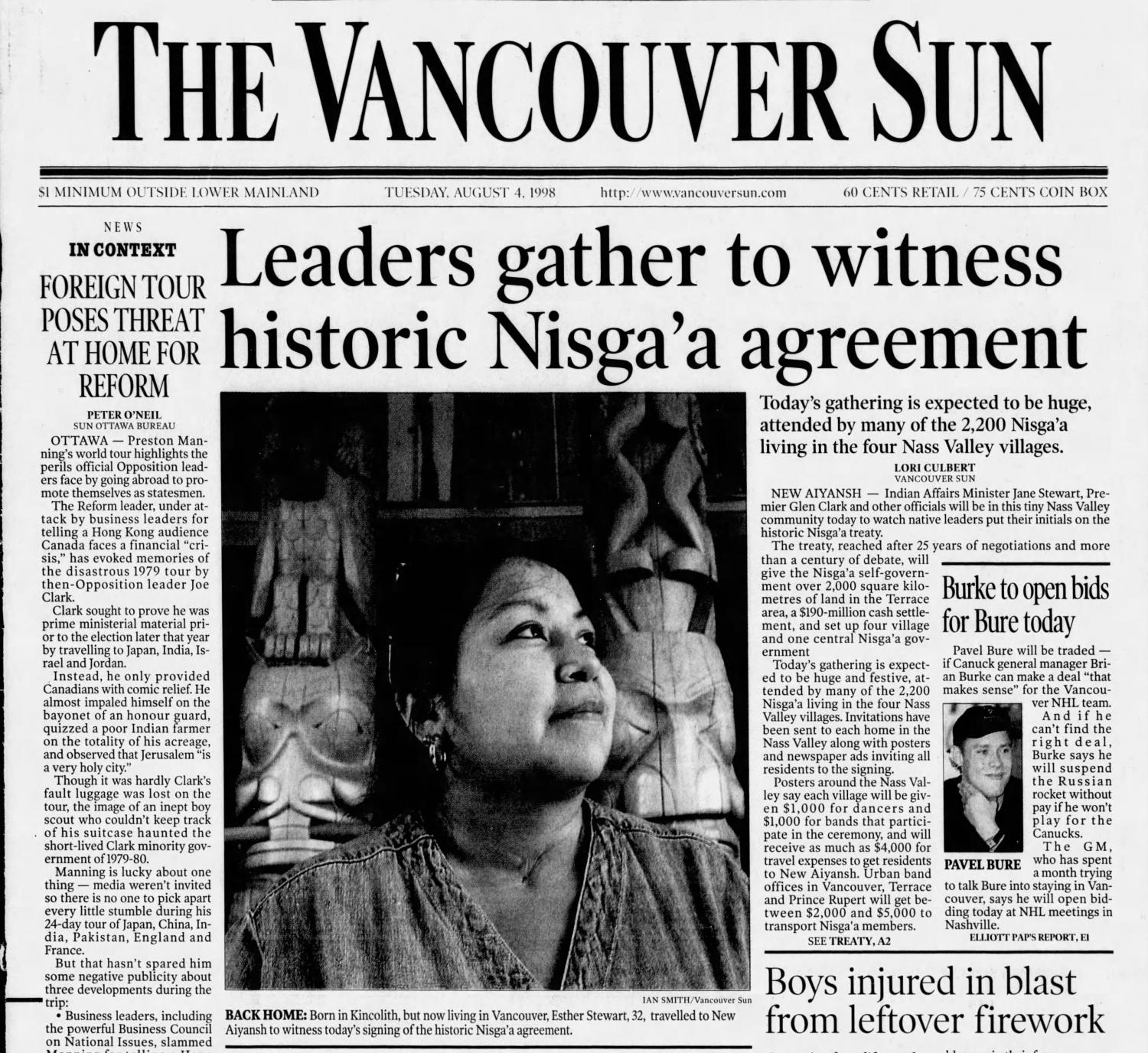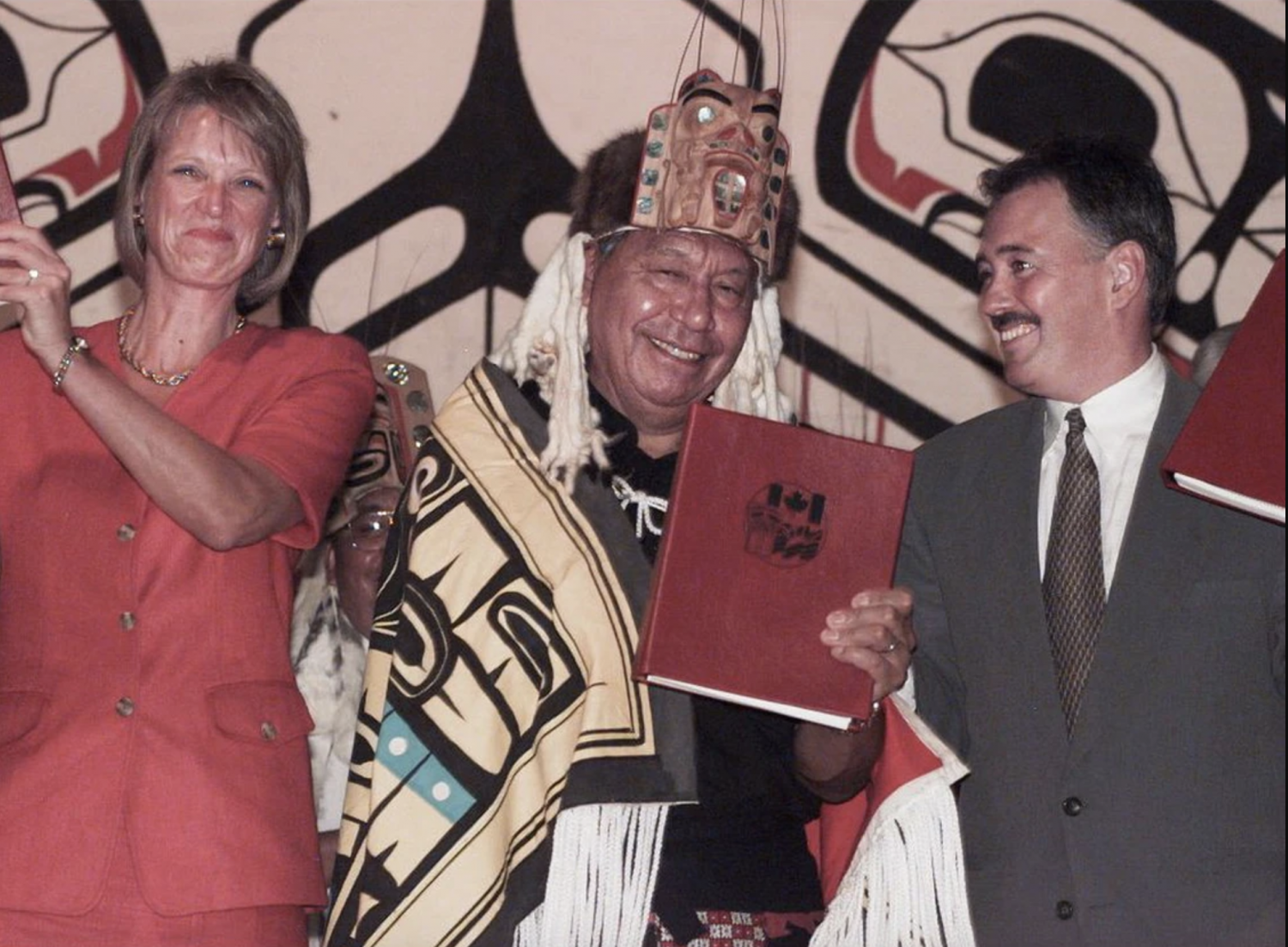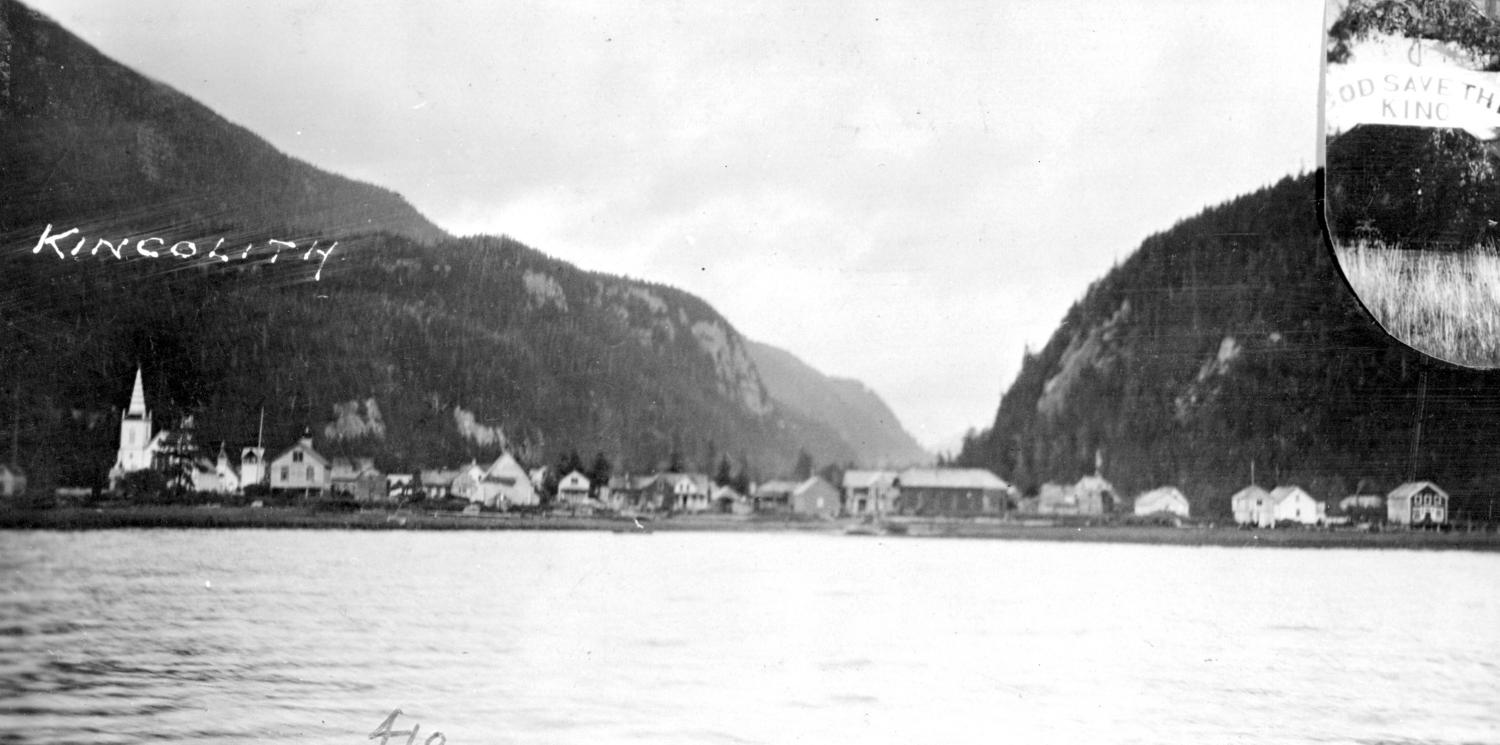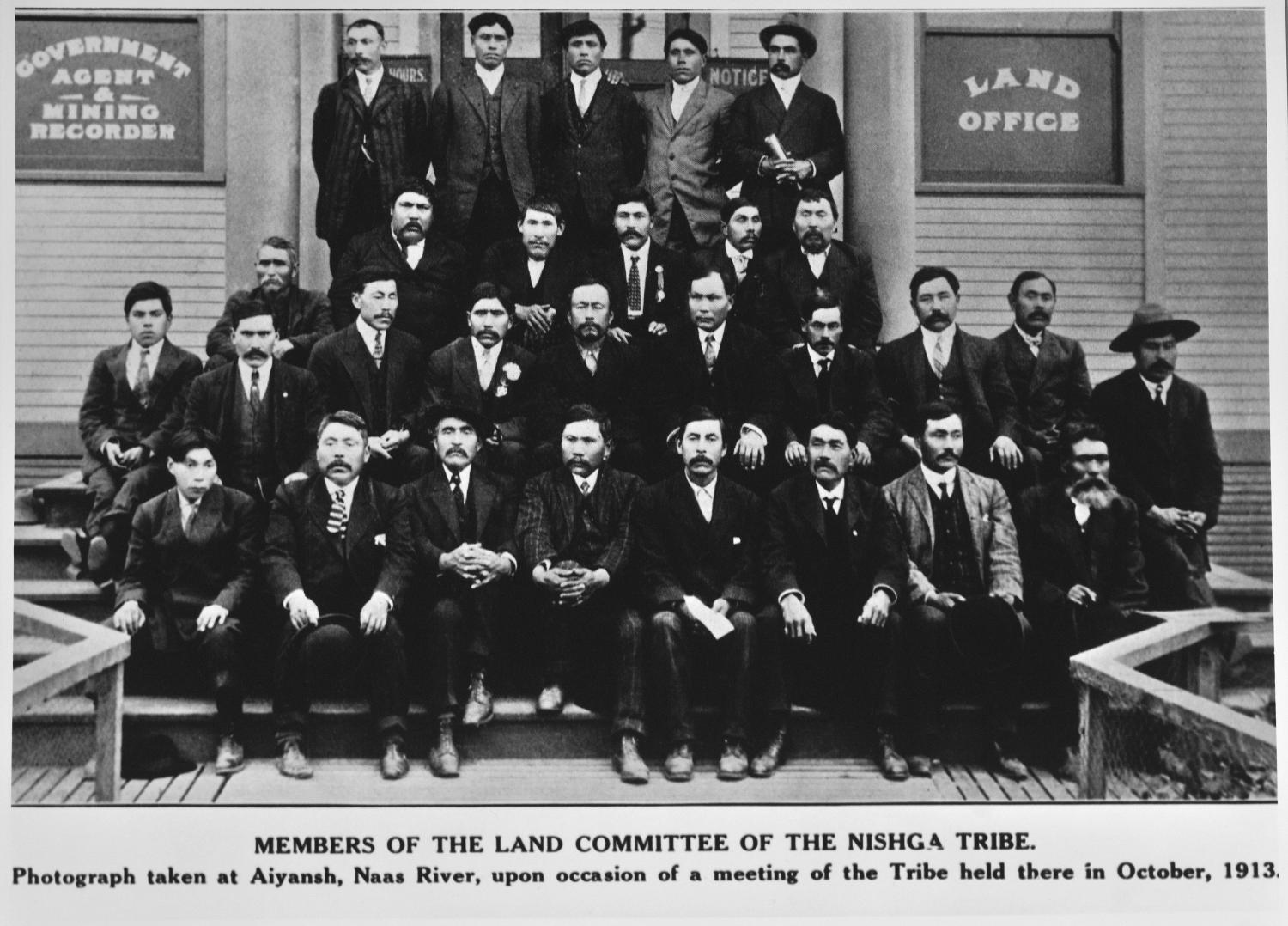The Nisga’a Treaty
After more than a century campaigning, the Nisga’a sign B.C.’s first modern treaty
Date: 1998
Since at least 1881, the Nisga’a had formally lobbied governments to recognize their title to the Nass Valley, located in northwestern British Columbia. But despite repeated efforts — blockades, government meetings, letters, petitions and declarations — no progress was made until 1973 when the Supreme Court of Canada acknowledged Aboriginal title to land, the first Canadian court ever to do so. Though the Nisga’a lost that case, it spurred the federal government to introduce a formal process to resolve Indigenous land claims. Then, in 1976, nearly a century after the Nisga'a first protested the loss of their land, the First Nation and the federal government entered into treaty negotiations.
Talks moved slowly, and the B.C. government refused to participate until 1990. By the fall of 1995, the federal and B.C. governments proposed a settlement to the Nisga’a. Three years later, the Nisga’a Final Agreement was signed on Aug. 4, 1998 in a celebration at New Aiyansh, a Nisga’a village now called Gitlax̱t'aamiks about 100 kilometres north of Terrace. In November 1998, the Nisga’a people voted in favour of the agreement their leaders had negotiated, and it finally came into effect May 11, 2000. Colloquially known as the Nisga’a Treaty, it’s the first modern treaty signed in B.C.
“Today marks a turning point in the history of British Columbia,” Chief Joseph Gosnell, the lead Nisga’a negotiator, told the B.C. legislature shortly after the nation’s vote. “Today, Aboriginal and non-Aboriginal people are coming together to decide the future of this province.”
The treaty granted the Nisga’a the right to self-governance, paving the way for the creation of the Nisga’a Lisims Government. It also granted the Nisga’a people 2,000 square kilometres of land in the Nass Valley, which is fully overseen by the nation’s own government. Additionally, the treaty and associated agreements provided the Nisga’a with nearly $200-million, allocations of salmon and other wildlife, a water reservation, and additional funding for health, education and other social services. The Nisga’a remain Canadian citizens, and their laws must abide by the Canadian constitution. But they are no longer tethered to the notorious Indian Act. While this change comes with many positives, there are also some negatives. For instance, it allows the Nisga’a to privatize land for band members to buy, but it also opens up its people to taxation they were previously exempt from.
The treaty wasn’t without its critics. Non-Indigenous people living in Nisga’a territory worried how it might impact their lives. Neighbouring Indigenous communities, like the Gitanyow, claimed the treaty would infringe on their own land claims and resources. Future-Premier Gordon Campbell, then leader of the official opposition, filed a lawsuit arguing the treaty was unconstitutional. The lawsuit was later dropped.
Meanwhile, some Indigenous rights advocates pointed to the land the Nisga’a gained — only about eight per cent of their traditional territory. As a precedent, they say this small allotment handicaps other Indigenous land claims. The treaty has even created divisions within the Nisga’a Nation. One hereditary leader named Sga’nisim Sim’augit (Chief Mountain) unsuccessfully sued the federal government over the treaty. Like Premier Campbell, he alleged it was unconstitutional. Others say it hasn’t improved the quality of life for the average Nisga’a.
Despite the controversy, the treaty remains in place today and is widely credited with laying the foundation for B.C.’s modern treaty negotiation process.
Sources:
- Allen, Edward. "Reflections on the 40th Anniversary of the Calder Decision." Northern Public Affairs, Sept. 2013, pp. 14–21, http://www.northernpublicaffairs.ca/index/wp-content/uploads/2014/03/Allen.pdf.
- "B.C. Liberals Drop Nisga’a Lawsuit." CBC, 30 Aug. 2001, https://www.cbc.ca/news/canada/b-c-liberals-drop-nisga-a-lawsuit-1.272478.
- Culbert, Lori. "Leaders Gather to Witness Historic Nisga’a Agreement." Vancouver Sun, 4 Aug. 1998, p. A1.
- Culbert, Lori, and Stewart Bell. "Nisga’a Treaty Makes History." Montreal Gazette, 5 Aug. 1998, p. A8.
- Foster, Hamar. "Honouring the Queen’s Flag: A Legal and Historical Perspective on the Nisga’a Treaty." BC Studies, no. 120, 1998, https://ojs.library.ubc.ca/index.php/bcstudies/article/view/1475/1519.
- Hall, Anthony. "Treaties with Indigenous Peoples in Canada." The Canadian Encyclopedia, 6 June 2011, https://www.thecanadianencyclopedia.ca/en/article/aboriginal-treaties.
- Hume, Mark. "Nisga’a Dissidents Challenge Landmark Treaty." The Globe and Mail, 4 Oct. 2010, https://www.theglobeandmail.com/news/british-columbia/nisgaa-dissidents-challenge-landmark-treaty/article4389898/.
- Nicholls, Barrie. "Aboriginal Land Title: The Nisga’a’s Fight for Sovereignty." The Corvette, vol. 3, no. 1, 2014.
- Paul, Gillian. "Supreme Court Dismisses Case Challenging Nisgaa Agreement." CanLII Connects, 11 Oct. 2013, https://canliiconnects.org/en/commentaries/37084.
- The Nishga Petition to His Majesty’s Privy Council : A Record of Interviews with the Government of Canada Together with Related Documents. Conference of Friends of the Indians of British Columbia, 1915, https://open.library.ubc.ca/collections/bcbooks/items/1.0379328#p13z-5r0f. University of British Columbia Open Collections.
- "Timeline." Nisga’a Lisims Government, https://www.nisgaanation.ca/timeline. Accessed 22 May 2021.
- "Understanding the Treaty." Nisga’a Lisims Government, Sept. 1998, https://www.nisgaanation.ca/understanding-treaty.
- "What Is a Modern Treaty?" Land Claims Agreements Coalition, 2020, https://landclaimscoalition.ca/modern-treaty/.
- Wood, Chris. "Nisga’a Land Treaty." The Canadian Encyclopedia, 3 Dec. 2012, https://www.thecanadianencyclopedia.ca/en/article/nisgaa-land-treaty.





